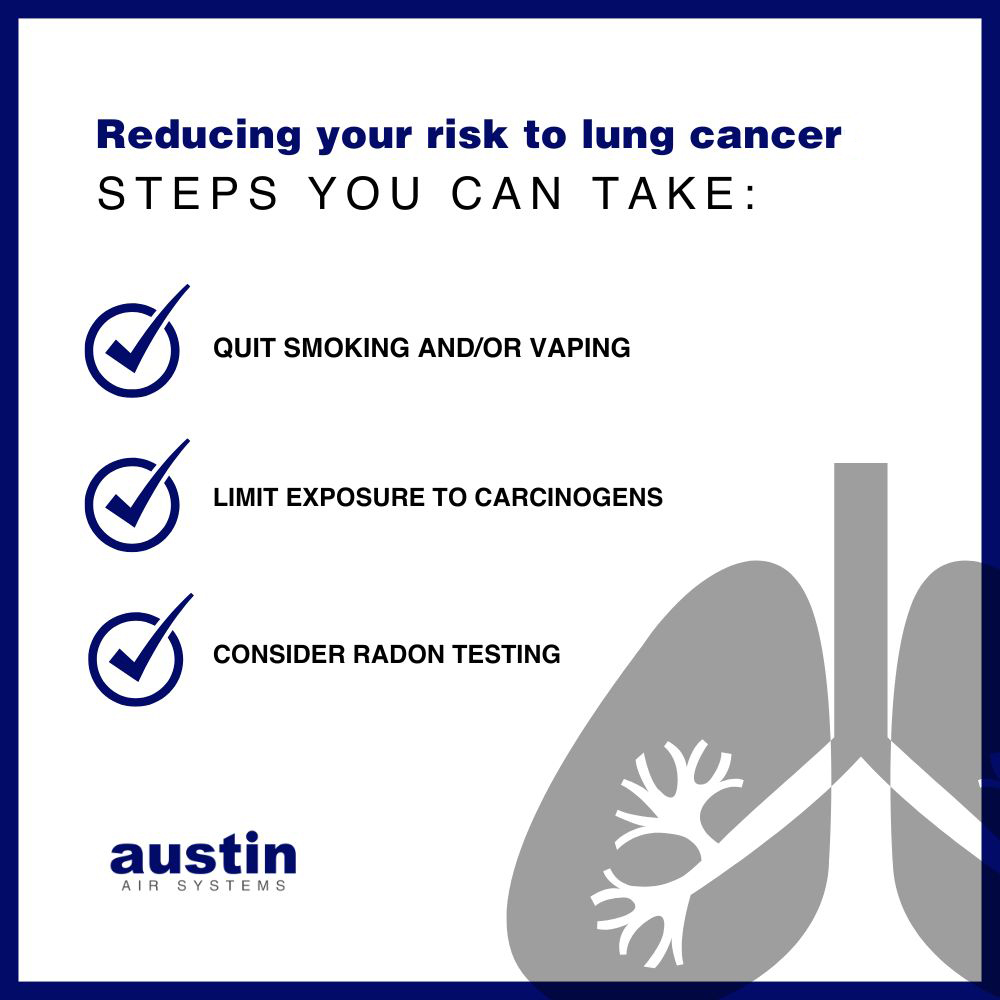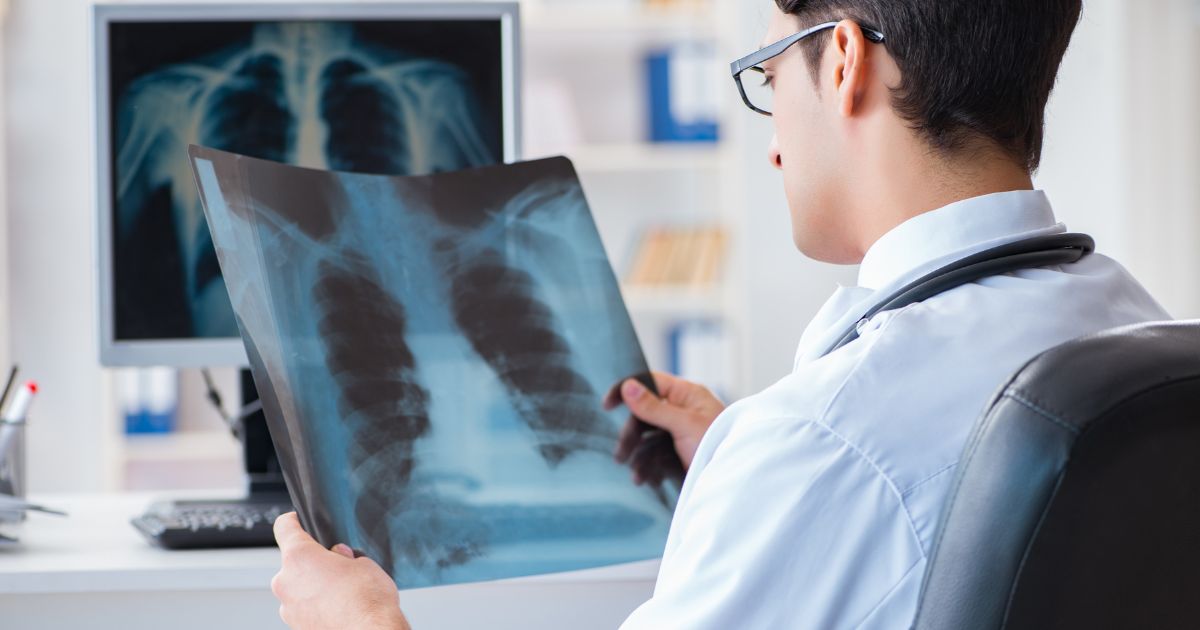November 1 marks the beginning of Lung Cancer Awareness Month, a time for reflection, education, and action against the deadliest cancer affecting both men and women. While many people begin thinking about holiday preparations, it’s also a solemn reminder of the lives touched by this disease.
At Austin Air, we are committed to promoting healthier lives through better air quality, and we stand with organizations nationwide working to raise awareness about lung cancer and its numerous risk factors. Here’s why Lung Cancer Awareness Month matters and how you can protect yourself and those you love.
Why Lung Cancer Awareness Matters
Lung cancer has the highest mortality rate of any cancer, claiming more lives than breast, prostate, and colorectal cancers combined. Despite this, it remains one of the least funded types of cancer in terms of research support.1 This funding disparity highlights the critical need for increased awareness and financial support during Lung Cancer Awareness Month, not only to improve research and treatment options but also to dismantle stigmas and provide the resources necessary for prevention.
Early detection remains the key to a better prognosis. However, symptoms of lung cancer often don’t appear until the disease has progressed, making timely diagnosis more difficult. This makes awareness efforts particularly urgent as they emphasize early recognition, the importance of regular health checkups, and education on associated risks and preventative measures.
Recognizing the Symptoms Early
The dangers of lung cancer are compounded by the fact that symptoms usually go unnoticed until the disease is at an advanced stage. Lung cancer comes in two primary types—non-small cell lung cancer (NSCLC), which is more common, and small cell lung cancer (SCLC), which tends to grow and spread rapidly. Recognizing early signs and symptoms is essential to improve the chances of early diagnosis. Consult your doctor if you or a loved one experience any of the following:
- Persistent cough that worsens over time
- Shortness of breath or wheezing that isn’t linked to other respiratory conditions
- Chest pain that intensifies with deep breaths, coughing, or laughter
- Unexplained weight loss or loss of appetite
- Coughing up blood or rust-colored phlegm
- Recurring infections, like pneumonia or bronchitis
Some symptoms can also indicate that cancer has spread to other parts of the body. These may include bone pain, neurological symptoms like dizziness or balance issues, and unusual lumps under the skin near the collarbone or neck. Awareness of these symptoms is particularly crucial for individuals with risk factors like a history of smoking, exposure to harmful chemicals, or genetic predispositions.

Screening for Lung Cancer: Is It Right for You?
Screening is one of the most powerful tools in detecting lung cancer at an earlier stage. For high-risk individuals, lung cancer screening can be life-saving. The National Lung Screening Trial (NLST) has demonstrated that low-dose spiral CT scans can detect lung cancer early, reducing lung cancer deaths by 15–20% compared to chest X-rays alone.2
Screening is generally recommended for adults aged 55 to 80 who have a history of heavy smoking, defined as 30 pack-years or more, and who currently smoke or have quit within the past 15 years. A ‘pack year’ is calculated by multiplying the number of packs of cigarettes smoked per day by the number of years a person has smoked. For instance, smoking one pack per day for one year equals one pack year, as does smoking two packs per day for six months.
For those who meet these criteria, discussing lung cancer screening options with a healthcare provider could be a critical preventive step. By catching abnormalities early, screening has the potential to offer a wider range of treatment options and improve survival rates significantly.
Reducing Your Risk: Steps You Can Take
While smoking is the primary cause of lung cancer, many cases occur in non-smokers or former smokers. Other risks include prolonged exposure to indoor and outdoor pollutants, such as radon, asbestos, vehicle exhaust, and volatile organic compounds (VOCs). Fortunately, there are steps you can take to reduce your exposure:
- Quit Smoking: If you smoke, quitting can dramatically reduce your odds. For instance, research shows that women who quit by age 40 reduce their lung cancer risk by 90%, and men see similar benefits.
- Limit Exposure to Carcinogens: Using air purifiers at home, avoiding secondhand smoke, and being mindful of potential exposures to hazardous substances like asbestos and certain industrial chemicals can help mitigate your risk.
- Consider Radon Testing: Radon is a naturally occurring radioactive gas that can enter buildings through the ground and is a leading cause of lung cancer in non-smokers. Testing and, if necessary, mitigating radon levels in your home can reduce exposure significantly.
Taking steps to improve the air quality in your home is a valuable approach to health. Investing in high-quality air purifiers, such as Austin Air purifiers, can help reduce the presence of airborne pollutants, potentially lowering the risk associated with prolonged inhalation of harmful particles.

Breaking the Stigma Around Lung Cancer
Unlike many other cancers, lung cancer carries a stigma, often due to its association with smoking. However, there are many reasons why people begin and continue to smoke, including social, economic, and cultural influences. For those affected, quitting smoking is notoriously difficult; many experts equate it to overcoming a powerful addiction, comparable to heroin. In fact, around 60% of lung cancer patients are former smokers who face misplaced judgment rather than the empathy they need.
This stigma can also lead to reluctance in seeking medical help or delay in diagnosis. It’s crucial to remember that all individuals diagnosed with lung cancer deserve support and compassion, regardless of their history. Awareness month initiatives aim to break this stigma and encourage people to focus on prevention, early detection, and supporting those affected by lung cancer. A single donation, a shared story, or simply offering words of encouragement can make a difference.
How You Can Make an Impact This November
There are numerous ways to contribute during Lung Cancer Awareness Month. Consider volunteering or donating to organizations focused on lung cancer research or patient support. Sharing educational materials and engaging in conversations about lung health, smoking cessation, and the importance of air quality can have a meaningful impact in breaking down stigmas and spreading awareness.
Whether by helping a loved one quit smoking, advocating for cleaner air in your community, or simply being a supportive friend, your actions count. Let’s work together to raise awareness, reduce the risk, and support those affected by lung cancer. At Austin Air, we’re proud to join in this mission, and we hope you’ll join us, too, in promoting healthier lives through better air quality.
REFERENCES
1 Key Statistics for Lung Cancer (2024 January 29). American Cancer Society. https://www.cancer.org/cancer/types/lung-cancer/about/key-statistics.html.
2 National Lung Screening Trial (NLST). (2014 September 8). National Cancer Institute. https://www.cancer.gov/types/lung/research/nlst.
